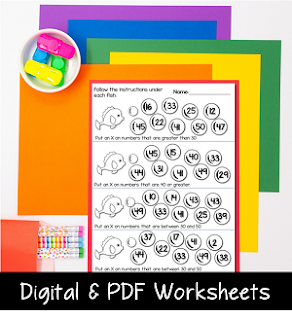It happens every day. We all have 5 minutes here and there during our day in the classroom that we need to fill, and we want to find meaningful ways to fill that 5 minutes. We want to make the most of those minutes, so it is important to find activities that are both educational and quick. I am here to help!
Today I am going to share with you 5 meaningful ways to fill 5 minutes by sharing 3 super simple activities you can use in your primary classroom right away, 1 website that is a must and 1 new product that will help you teach foundational Phonemic Awareness skills in just 5 minutes a day!
Stand Up/Sit Down
This listening activity can be used with any topic you choose. In grade 1 I use it to get to know students by asking questions about them, their families and their interests. It gets them moving but they need to listen to be able to play. Some possibilities are using letters or sounds in names: Stand up if you have the "s" sound in your name. You can use it in math as a way to answer survey questions: Stand up if an apple is your favorite fruit. There are many possibilities.Around the Circle
This is a game we play in our carpet area. My kids giggle when I tell them we are going to play Around the Circle because we actually make a rectangle to play. Around the Rectangle doesn't have the same ring! I have played different variations of this game, too. The most popular one is a counting game - as I go around the circle, I count each student according to the pattern I have decided. At the beginning, I determine a number or numbers that, if you are counted, you will sit down. For instance, if we are counting by 1's to 50, I might say that if your number ends in 0 you must sit down when you are counted. We continue counting to 50 until there is only one person left standing. The kids start to predict who will sit down next based on how the pattern has progressed. This is a great way to practice skip counting too.Categories is another version. We all stand up and I give a category. Each student in the circle has to say a word that fits in that category with the hopes that you can make it all around the circle. Categories could relate to any content area, for instance: name a healthy food or name an even number. If a student doesn't have an answer, they can sit down or you can start a new category if you don't want anyone to go "out".
Body Spell
In my version of body spell, we spell the word wall words. We don't make the actual letters but I use these actions:Tall letters - hands over head
Tummy letters (letters that sit on the line) - tap your stomach
Dangly letters (letters that drop below the line) - touch your toes
I give them a clue before I start - The word start the letter W or it is on the top half of the Word Wall or in the Word Jail. If I was spelling "went", I would tap my stomach 3 times and the put my hands in the air. I encourage them to count my movements so they can use the clue of how many letters in the word to help them find the word. They become very good at figuring out the word and love to come to the front and body spell for their classmates. It is a great way to get your students to look closely at the letters in words and another awesome way to use your Word Wall. If you are interested in learning more about how to set up and use a Word Wall you can check out my part 1 of a 3 part series {HERE}
GoNoodle!
Phonemic Awareness in 5 Minutes
As a first grade teacher, I start the year assessing my student's phonemic awareness skills with a screener. Once I have analyzed the data I make a plan for addressing the gaps that most students have and plan to do some whole group work. You can grab the the screen I use and learn more about how I use the data by clicking the image below.All of our phonemic awareness resources are in a big binder that is not very teacher friendly while you are teaching the whole group at the carpet. I needed a portable resource that I could hold in my hand and have ready to go.
Put a set of cards on its own binder ring and hang the sets that you need in your teaching area.
Choose the skills that fit your needs! Cards sets for skills from word awareness up to the more complex skill of phoneme manipulation.
Are you interested in learning more about all things Phonemic Awareness? Check out this post as a starting point.
I hope that you have found some ideas to make filling those small chunks of time in your class in a meaningful way. Thanks for stopping by.
Until next time.























.png)









Love these ideas. As a 6th grade teacher, I always find it fascinating to learn the strategies of lower grade teachers. The "tummy touch", "knee touch", and "hands in the air" letter recognition is brilliant. Thank you! I need to check out Go Noodle.
ReplyDelete